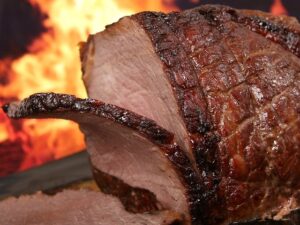Introduction
Wheat protein isolate is a highly refined form of protein derived from wheat. It is commonly used in the food industry as an ingredient in various products, including baked goods, meat substitutes, and protein supplements. In this article, we will explore the process of extracting wheat protein isolate, its nutritional composition, and its potential benefits and drawbacks.
Extraction Process
Wheat protein isolate is obtained through a process called wet milling. The first step involves separating the protein from the wheat flour by dissolving it in water. This mixture is then subjected to centrifugation or filtration to remove the insoluble components, such as starch and fiber. The resulting liquid is then dried to obtain a powdered form of wheat protein isolate.
Nutritional Composition
Wheat protein isolate is a rich source of protein, containing approximately 90% protein by weight. It is also low in carbohydrates and fat, making it a popular choice for individuals following high-protein, low-carbohydrate diets. Additionally, it is gluten-free, which makes it suitable for people with gluten sensitivities or celiac disease.
Benefits of Wheat Protein Isolate
1. High Protein Content: Wheat protein isolate is a concentrated source of protein, making it an excellent choice for individuals looking to increase their protein intake. Protein is essential for muscle growth and repair, as well as for various other functions in the body.
2. Amino Acid Profile: Wheat protein isolate contains all the essential amino acids, which are the building blocks of protein that the body cannot produce on its own. This makes it a complete protein source, comparable to animal-based proteins.
3. Digestibility: Wheat protein isolate is generally well-tolerated and easily digestible for most individuals. It is less likely to cause digestive discomfort compared to other protein sources, such as soy or whey.
4. Versatility: Wheat protein isolate has a neutral taste and a fine texture, making it easy to incorporate into a wide range of food products. It can be used as a thickening agent, a binding agent, or a protein supplement in various recipes.
Drawbacks of Wheat Protein Isolate
1. Potential Allergenicity: While wheat protein isolate is gluten-free, it may still cause allergic reactions in individuals with wheat allergies. It is important to note that wheat protein isolate is not suitable for those with celiac disease, as even trace amounts of gluten can trigger adverse reactions.
2. Processing Methods: The process of extracting wheat protein isolate involves several refining steps, which may result in the loss of some nutrients and bioactive compounds present in whole wheat. This means that wheat protein isolate may not offer the same nutritional benefits as consuming whole wheat products.
Conclusion
Wheat protein isolate is a highly refined form of protein derived from wheat. It offers a concentrated source of protein with a neutral taste and versatile applications in the food industry. Its high protein content, complete amino acid profile, and digestibility make it a popular choice for individuals looking to increase their protein intake. However, it is important to consider potential allergenicity and the loss of nutrients during the extraction process. As with any dietary ingredient, it is advisable to consult with a healthcare professional before incorporating wheat protein isolate into your diet.
References
1. Food and Agriculture Organization of the United Nations. (2013). Wheat Protein Isolates. Retrieved from fao.org
2. Institute of Food Technologists. (2019). Wheat Protein Isolate. Retrieved from ift.org
3. United States Department of Agriculture. (2021). FoodData Central. Retrieved from fdc.nal.usda.gov













